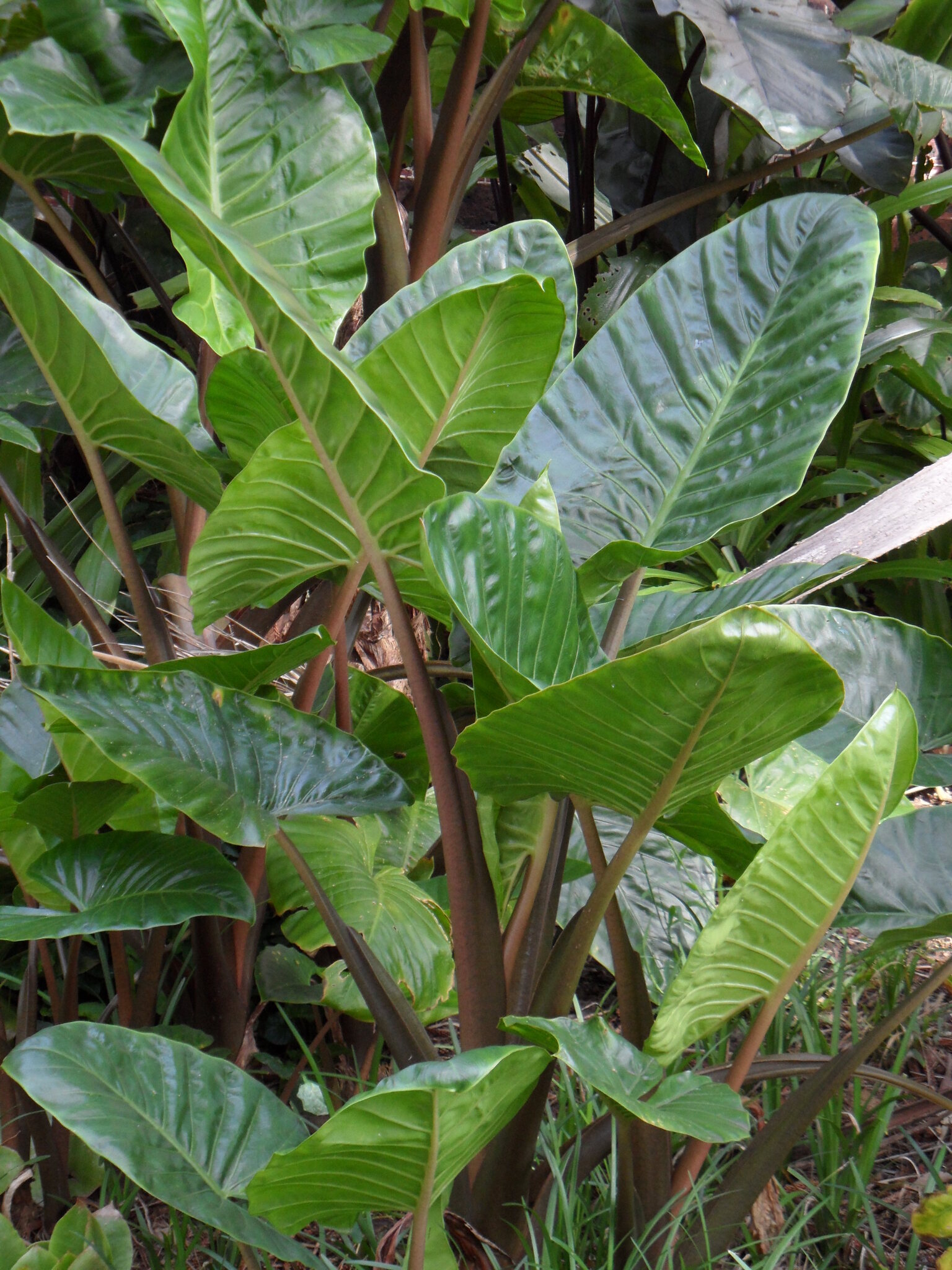
Nomenclatural variant of Colocasia Elephant’s Ear Plant.
Upright or spreading evergreen rhizomatous and tuberous, sometimes tree-like, plants. Leaves entire to deeply divided, peltate (at least at first), cordate or arrow-head shaped, often variegated, the basal lobes generally held uppermost with the blades drooping; stalks long and sheathed. Flower stalk usually shorter than the leaf stalks. Spathe greenish, the tube much shorter than the blade which eventually bends back. Spadix with a terminal appendix; stamens 3-8 in a column. Inflorescences often paired. Flowers unisexual without a perianth. Ovary with 1 chamber containing numerous ovules. Fruit a berry with 1-few seeds ripening orange or red.
Grown, mostly as houseplants, for the ornamental, often variegated, leaves. A number of hybrids are encountered in cultivation.
About 70 tropical species from Indomalesia to Australia.
Cuttings, stem corms, or occasionally seed.
The rhizomes of some species are edible, notably those of A. macrorrhizos.
Large sterile appendix; ovules or seeds 1 or few; placentation basal cf. Colocasia.
Burnett (1984), Hay & Wise (1991).
Source: (2005). Araceae. In: . Horticultural Flora of South-eastern Australia. Volume 5. Flowering plants. Monocotyledons. The identification of garden and cultivated plants. University of New South Wales Press.
